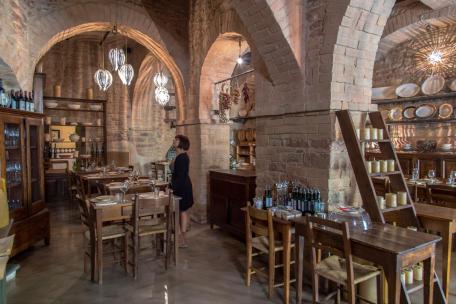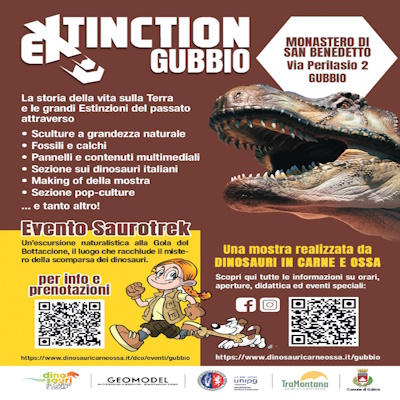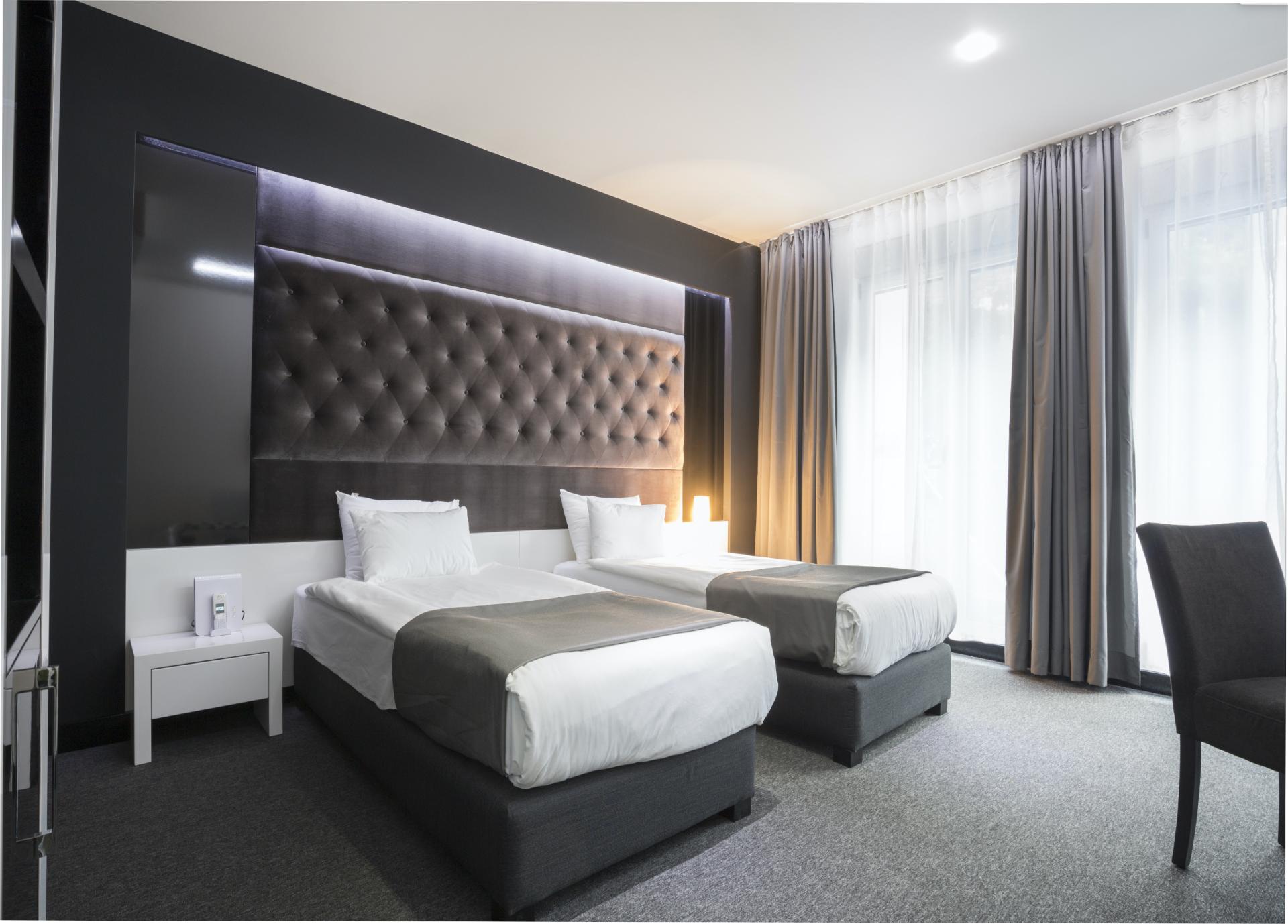Norcia: an ancient city and its significant contribution to the roots of Christian Europe
In the heart of the Sibillini Mountains National Park, Norcia is an ancient town founded by the Sabines. It derives its name from Northia, the Etruscan goddess of fate and fortune.
The Sabine settlement was originally located at a higher elevation than the current one, in the locality of Capo la Terra. Around 300 B.C., it was conquered by the Romans and became a municipium (268 B.C.); its importance was tied to its strategic position, the quality of its agricultural products, and the fact that it was the birthplace of notable Roman citizens.
In the 3rd century A.D., the area of Norcia was Christianised by Felician, bishop of Foligno, and by the 4th century, it became a bishopric. Around 480, the holy siblings Benedict and Scholastica were born in this mountain town. Benedict founded the first monastic order of the Western world in 529, which, under the motto “ora et labora” (pray and work), spread quickly across Europe, becoming a key unifying force between distant and diverse regions, fostering unity through liturgical prayer, structured regulations, culture (scriptoria and libraries preserved and spread the heritage of Greek and Roman knowledge), the cultivation of fields, and the reclamation of vast uncultivated lands.
Norcia became a Free Commune in the 13th century, and in the 1300s it expanded its territory and influence in the surrounding area; it was during this time that the powerful city walls were built, still standing despite repeated and severe earthquakes. In the 15th century, it definitely came under Papal control, falling under the jurisdiction of the Pontifical Legation of Perugia. The people of Norcia often resisted to papal rule, so much so that in the 16th century, the Castellina, a fortified residence of the papal legate designed by Vignola, was erected.
In 1569, Norcia became the seat of the Prefecture of the Mountain, overseeing the surrounding towns. From that moment on, the town experienced a flourishing artistic period: in the 17th century, it was enriched with churches and monuments, and it became home to a theater and a literary academy. Unfortunately, many ancient monuments and buildings were lost due to repeated and devastating earthquakes, particularly in 1703 and 1859.
Having become part of the Kingdom of Italy after the 1860 plebiscite, Norcia was enriched with numerous public works, such as Porta Romana and the monument to Saint Benedict.
Norcineria and the Surgical School of Preci
During the early Middle Ages, Norcia was plundered by the Goths and Lombards, leading to a partial abandonment by its population. Recovery was slow but steady. It was likely during this period, before the gradual deforestation of the mountain, that the people of Norcia, taking advantage of the abundance of acorns, began to specialise in pig farming and pork processing. this practice became so renowned that it gave rise to the name “Norcineria”.
This activity, combined with frequent interactions between the local population and the Benedictine community of nearby Preci – linked with the Salerno School of Medicine and Anatomy – gave rise to the renowned “School of Surgery” of Preci. This school’s knowledge was passed down through generations within certain families.
A visit to ancient Norcia, through its neighborhoods, the “guaite”
Divided into neighborhoods, called “guaite”, with an urban fabric dating back to the 17th and 18th centuries, Norcia boasts a rich historical and artistic heritage, placing it among the most important art cities of Umbria.
On the main square stand the most significant and ancient historical buildings of the town, surrounding the statue dedicated to Saint Benedict, a work from 1880 by the sculptor Giuseppe Prinzi, created to celebrate the 1400th anniversary of the birth of the patron of Europe.
Overlooking the square is the Castellina, a monumental fortress built in 1554 based on the design of Vignola, now home to the Civic and Diocesan Museum. Also in the square are the Town Hall with its double loggia, and the Basilica of Saint Benedict, built on Roman remains from the 1st century and featuring a Gothic facade from the 14th century, while its crypt preserves the remains of an ancient Roman building traditionally identified as the birthplace of Saints Benedict and Scholastica.
Also within the square is the Portico delle Misure, built around the mid-1500s as a covered market for cereals. Slightly off the square stands the Co-Cathedral of Santa Maria Argentea, dating from the 16th century, with a baroque altar created by the French artist François Duquesnoy around 1640.
Notable landmarks include the complex of San Francesco, from the 14th century, now housing the Auditorium, the Municipal Library, and the Historical Archive, the Palace of the Knights of Malta, now the seat of the Museum of Rural Art, and the Church of Sant’Agostino, built in the 14th century.
Among the most interesting sites are the Tempietto (small temple), the most original and best-preserved historical building in Norcia, designed by Vanni della Tuccia in 1354, the Church of San Giovanni, one of the oldest in Norcia, featuring a beautiful wooden ceiling and a Renaissance altar from 1649; the Oratory of Sant'Agostinuccio, with an elegant wooden ceiling and a precious baroque altar; the Church of the Madonna Addolorata, which houses a miraculous image of the Madonna painted on a canvas from the 18th century; the Church of the Crucifix, located near the city walls in the upper part of the town; and the Church of San Lorenzo, the oldest in Norcia.
Not just art and history: sports and nature in green Norcia
Norcia lies at the heart of the Monti Sibillini National Park, surrounded by peaks rising over 2,000 meters, making it a true paradise for hikers and skiers. Among the mountains, large flat amphitheaters support the cultivation of high quality crops (including the renowned lentils of Castelluccio) while large quantities and varieties of animals are raised (particularly pigs for the production of the famous cured meats, or “Norcineria”).
Not far from the city, the wide plains of Castelluccio host the European School of Free Flight, while numerous trails within the National Park offer opportunities for hiking, horseback riding, and mule trekking; the rivers Sordo and Corno provide options for rafting and canyoning, while the striking rocky cliffs, karst caves, and gorges throughout the entire Valnerina are ideal for free climbing and speleology.
Nearby, it is worth visiting Forca Canapine (20 km from Norcia, at 1541 meters) – a tourist center equipped for winter sports and hiking –, the plains of Castelluccio (Pian Perduto, Piano Piccolo, and Piano Grande, a vast karst basin, particularly beautiful in spring with alpine flowers), Monte Porche (2,235 meters), offering a stunning view of the Sibillini Mountains and the Abruzzo peaks, Mount Vettore (2,476 meters), with Lake Pilato and the Sibilla Cave, and the necropolis of the plain of Santa Scolastica, containing archaeological remains spanning from the Iron Age to the Roman period.
Norcia was significantly affected by the earthquake that struck central Italy in 2016, which damaged some of the most important treasures of its artistic and cultural heritage. Among these was the Church of Saint Benedict, which collapsed entirely after successive strong tremors, leaving only its outer facade intact.
Today, thanks to various interventions supporting the town and its surrounding villages, Norcia is taking its first steps towards reconstruction. This process will see the development of a new urban design in line with the historical and cultural identity of the town of Saint Benedict.




























